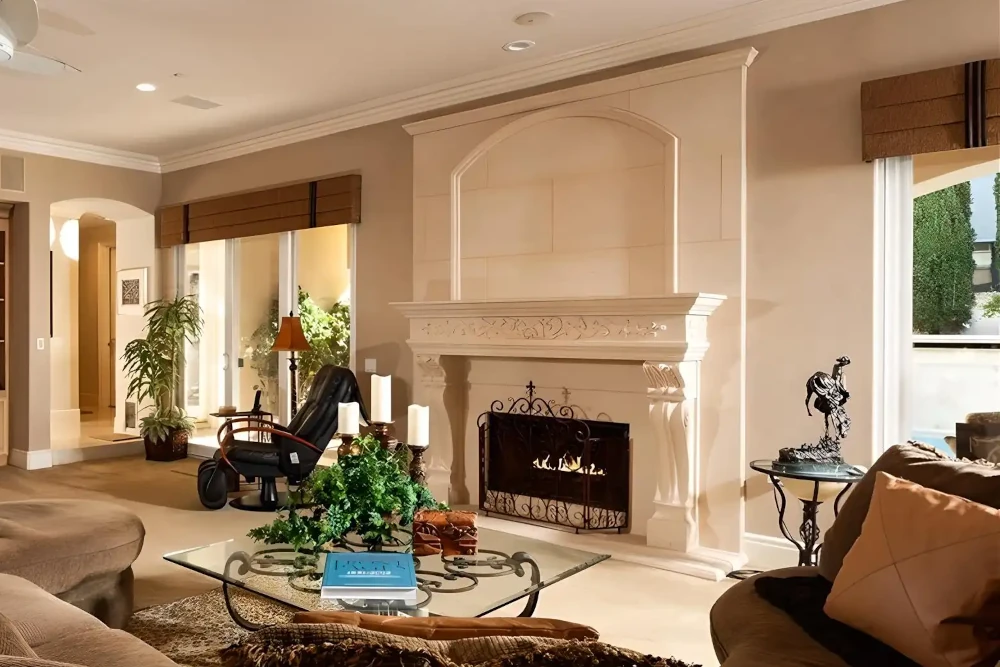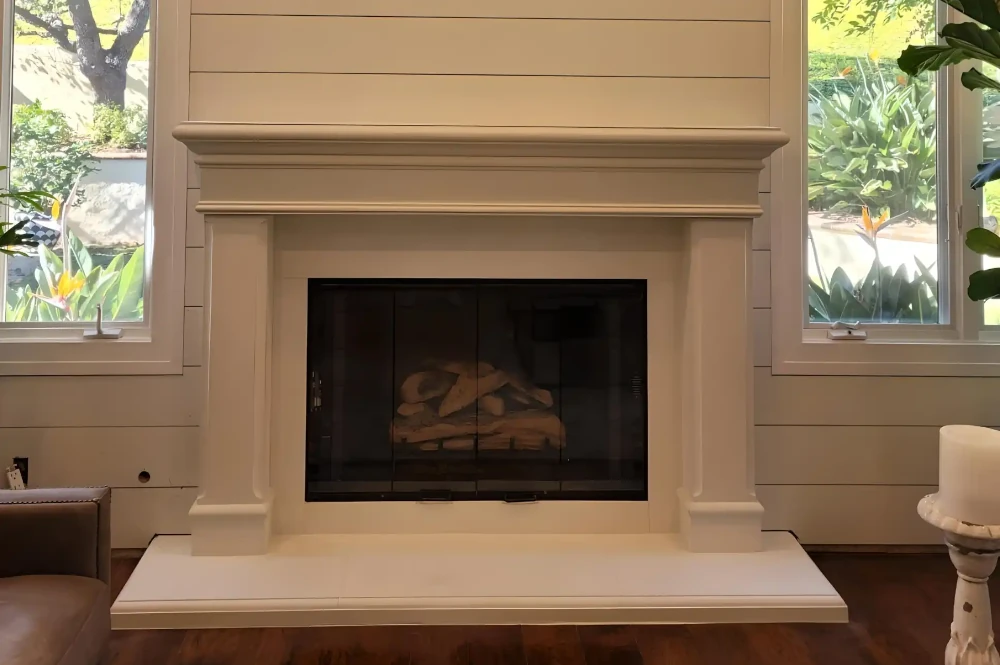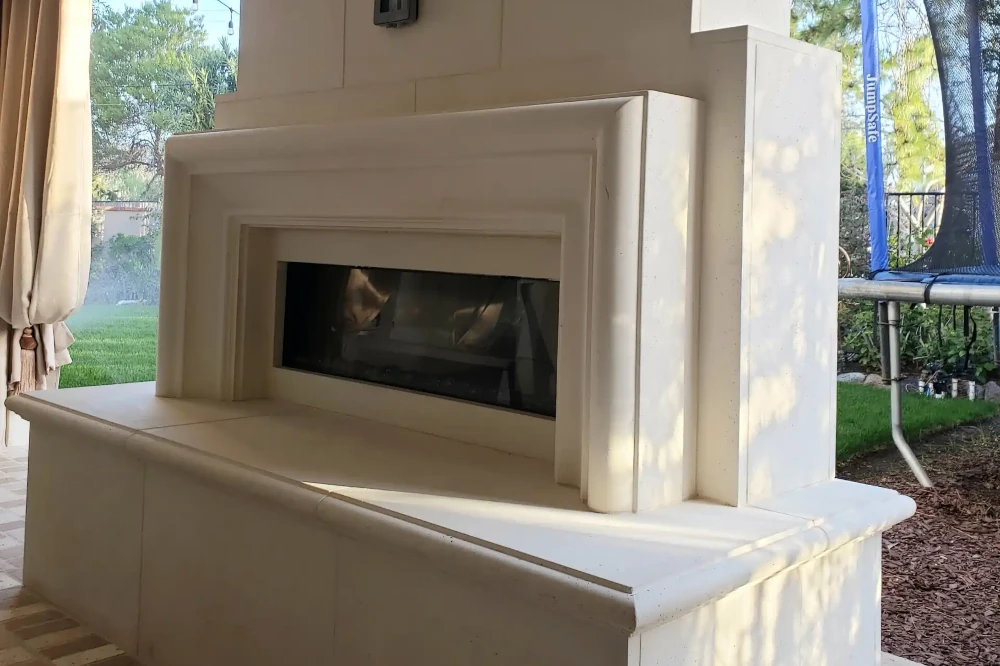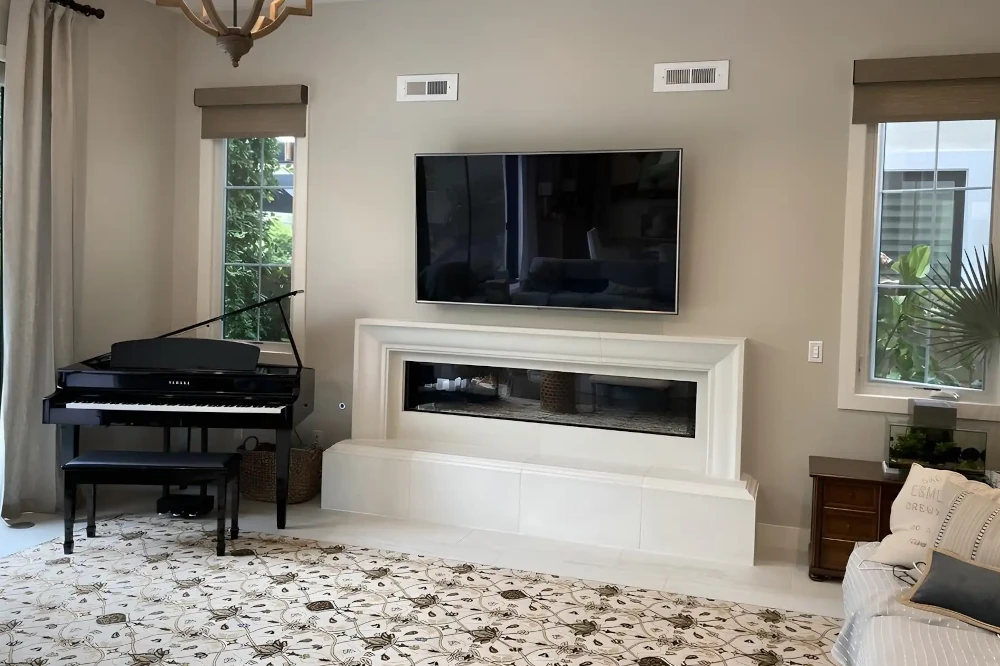In today’s world, environmental sustainability is a crucial consideration in almost every aspect of life, including home construction and interior design. One area where sustainable choices can make a significant impact is in the selection of materials for fireplace mantels. Cast stone fireplace mantels offer a range of environmental benefits that make them an attractive choice for eco-conscious homeowners and builders. This article explores these benefits in detail, highlighting how cast stone contributes to sustainability through its production process, material properties, and long-term durability.
1. Sustainable Production Process
The environmental advantages of cast stone begin with its production process, which is designed to be more sustainable compared to the extraction and processing of natural stone.
Reduced Quarrying Impact:
- Minimal Natural Resource Extraction: Unlike natural stone, which requires extensive quarrying, cast stone is manufactured using a combination of natural aggregates, cement, and pigments. This reduces the need for large-scale extraction of raw materials from the earth, thereby preserving natural landscapes and minimizing habitat disruption.
- Lower Carbon Footprint: The production of cast stone generates fewer carbon emissions than the quarrying, cutting, and transportation of natural stone. This is because the ingredients used in cast stone can often be sourced locally, reducing the distance materials need to be transported and the associated carbon emissions.
Use of Recycled Materials:
- Incorporation of Recycled Content: Many manufacturers of cast stone incorporate recycled materials, such as recycled concrete and aggregates, into their production processes. This reduces the demand for virgin materials and helps to divert waste from landfills.
- Eco-Friendly Binders: Advances in manufacturing technology have led to the development of more sustainable binders and additives that reduce the environmental impact of cast stone production. These innovations contribute to a greener production process and a more sustainable end product.
2. Energy Efficiency
Cast stone fireplace mantels contribute to the energy efficiency of homes in several ways, which in turn reduces the overall environmental impact.
Thermal Mass:
- Heat Retention and Regulation: Cast stone has excellent thermal mass properties, meaning it can absorb, store, and slowly release heat. When used in a fireplace mantel, this property helps to regulate indoor temperatures by retaining heat from the fireplace and releasing it gradually into the room. This reduces the need for additional heating, thereby lowering energy consumption and associated carbon emissions.
Reduced Energy Consumption:
- Improved Insulation: The thermal mass of cast stone also contributes to improved insulation. By maintaining a more stable indoor temperature, cast stone can reduce the load on heating and cooling systems, leading to lower energy consumption and a smaller environmental footprint.
3. Durability and Longevity
One of the key environmental benefits of cast stone fireplace mantels is their durability and longevity, which contribute to sustainability in several important ways.
Long Lifespan:
- Reduced Need for Replacement: Cast stone mantels are highly durable and resistant to chipping, cracking, and weathering. This means they have a long lifespan and do not need to be replaced frequently. As a result, fewer resources are required for repairs and replacements, reducing the overall environmental impact over the long term.
Low Maintenance:
- Minimal Resource Use: Cast stone mantels require minimal maintenance compared to other materials. Regular dusting and occasional cleaning with mild soap and water are typically sufficient to keep them looking pristine. This low maintenance requirement translates to reduced use of cleaning products and water, further minimizing their environmental impact.
4. Aesthetic and Functional Versatility
The versatility of cast stone in terms of design and functionality also contributes to its environmental benefits.
Design Flexibility:
- Customization and Adaptability: Cast stone can be molded into a wide range of shapes, sizes, and textures, allowing for highly customized designs that can meet specific architectural and aesthetic requirements. This flexibility reduces the need for additional materials or modifications, resulting in less waste and a more efficient use of resources.
Integration with Sustainable Design:
- Compatibility with Green Building Practices: Cast stone can be seamlessly integrated into sustainable building practices, such as passive solar design and green roofing. Its thermal properties and design versatility make it an ideal material for creating energy-efficient and environmentally friendly homes.
5. Environmental Certifications and Standards
Many manufacturers of cast stone adhere to environmental certifications and standards that ensure their products are produced in an eco-friendly manner.
LEED Certification:
- Contribution to Green Building Credits: Cast stone products can contribute to achieving Leadership in Energy and Environmental Design (LEED) certification for buildings. LEED certification is a globally recognized standard for green building practices, and using cast stone can help earn points in categories such as materials and resources, indoor environmental quality, and energy and atmosphere.
ISO Standards:
- Quality and Environmental Management: Manufacturers that comply with ISO standards, such as ISO 14001 (Environmental Management Systems), demonstrate a commitment to reducing their environmental impact. These standards ensure that cast stone products are produced using sustainable practices and that manufacturers are continuously working to improve their environmental performance.
6. End-of-Life Considerations
The environmental benefits of cast stone extend to its end-of-life phase, where it can be reused or recycled.
Reusability:
- Architectural Salvage: Cast stone elements, including fireplace mantels, can be salvaged and reused in new construction or renovation projects. This practice not only preserves the material’s aesthetic and functional value but also reduces the demand for new resources and minimizes waste.
Recyclability:
- Material Recycling: At the end of its life, cast stone can be crushed and recycled into new products, such as aggregate for concrete or road base. This recycling process helps to close the loop on material use and supports a more circular economy.
7. Comparisons with Other Fireplace Mantel Materials
To fully appreciate the environmental benefits of cast stone, it is useful to compare it with other common fireplace mantel materials such as wood, marble, granite, and metal.
Wood:
- Sustainability: While wood is a renewable resource, its environmental impact depends on sustainable forestry practices. Unsustainable logging can lead to deforestation and habitat destruction. Additionally, wood mantels require more frequent maintenance and replacement, leading to higher resource use over time.
- Flammability: Wood is a flammable material, which requires careful treatment and installation to minimize fire risks.
Marble and Granite:
- Resource Intensive: Quarrying natural stone like marble and granite is resource-intensive, involving significant land disruption, energy use, and water consumption. The transportation of heavy stone also contributes to a higher carbon footprint.
- Longevity: While durable, the environmental cost of quarrying and processing natural stone is higher compared to the production of cast stone.
Metal:
- Energy-Intensive Production: The production of metal mantels, particularly those made from stainless steel or wrought iron, is energy-intensive and generates substantial carbon emissions. However, metals are highly recyclable, which can offset some of their environmental impact.
- Modern Aesthetics: Metal mantels provide a sleek and modern look, but they may not offer the same level of thermal mass benefits as cast stone.
Conclusion
Cast stone fireplace mantels offer a range of environmental benefits that make them an attractive choice for sustainable home design. From their eco-friendly production process and energy efficiency to their durability and low maintenance requirements, cast stone mantels contribute to reducing the environmental impact of home construction and interior design. Additionally, their versatility in design and compatibility with green building practices further enhance their appeal as a sustainable material choice. By choosing cast stone, homeowners and builders can create beautiful, functional, and environmentally responsible living spaces that support a more sustainable future.
Visit Studio Design Works – Cast Stone Products for premium cast stone fireplace mantels. The manufacturer can be reached via this form or by phone at (949) 627-5926.
When it comes to home construction and interior design, choosing the right materials can make a significant difference in the overall aesthetic, durability, and cost of a project. Stone has long been a favored material […]
Fireplaces have long been the heart of the home, providing warmth and a gathering place for families and friends. Over the years, the design of fireplaces, particularly the mantels, has evolved significantly. Among the various […]
Modern cast stone fireplaces have become a popular choice for homeowners looking to add a touch of elegance, warmth, and architectural interest to their living spaces. Cast stone, a highly versatile material that mimics the […]
Modern cast stone has emerged as a popular choice in contemporary architecture and interior design, offering a blend of durability, versatility, and aesthetic appeal. Cast stone, a refined architectural concrete product, can mimic natural stone’s […]






